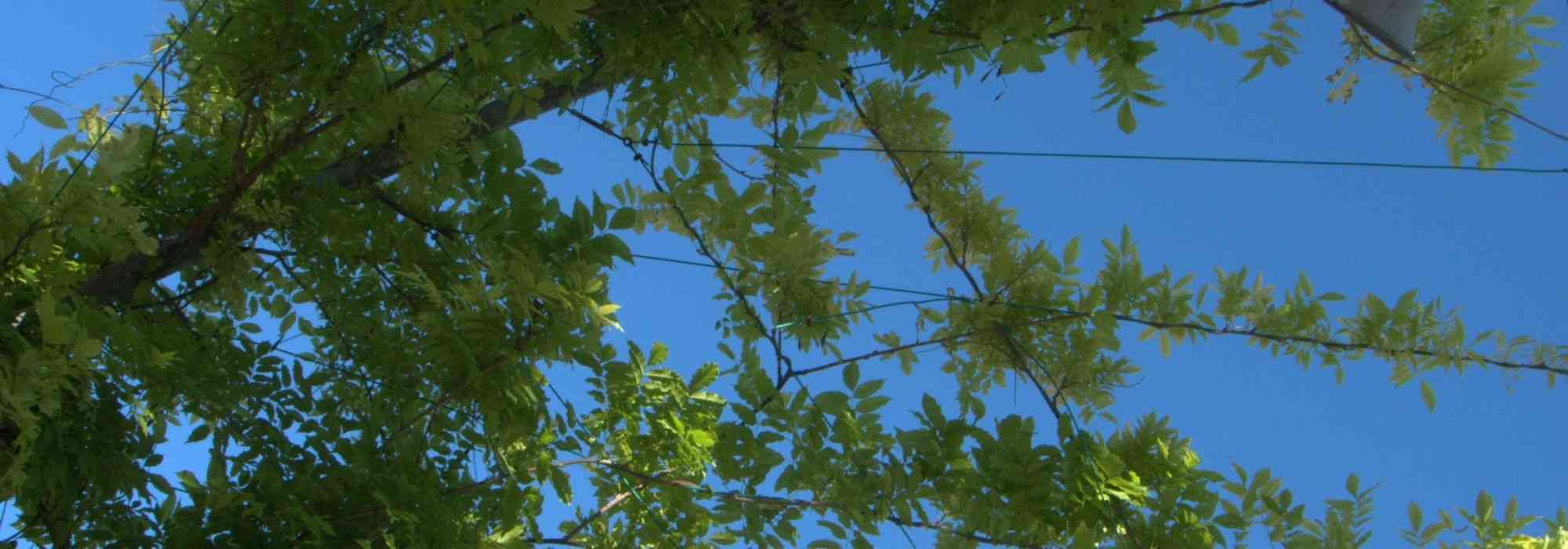
8 climbing plants for a South-facing garden
Our selection of the most beautiful flowering climbing plants to display in the sun
Contents
Climbing plants all share the strategy of relying on the support of other plants or objects to reach sunlight. Evergreen flowering climbing plants exposed to the south have the dual benefit of providing floral and foliage decoration while offering shade in summer. Trained against a wall, on a trellis, or a pergola, climbing plants free up valuable ground space and enhance the decor in small areas.
We have selected eight climbing plants and their companions to plant at their base for a successful display in full sun.
To avoid any failures, we advise you to plant appropriately. Feel free to adopt our web application Plantfit.
Star jasmine or Trachelospermum jasminoides
Trachelospermum jasminoides is known as Star Jasmine or False Jasmine. It is a climbing plant that is evergreen and famous for the penetrating fragrance of its small white flowers. Remarkable for its vigour, it develops long voluble stems adorned with beautiful green foliage, which can sometimes turn red in the cold. Hardy in the northern parts of our country in a sheltered position, it thrives very well in a large container to elegantly dress a terrace or balcony.
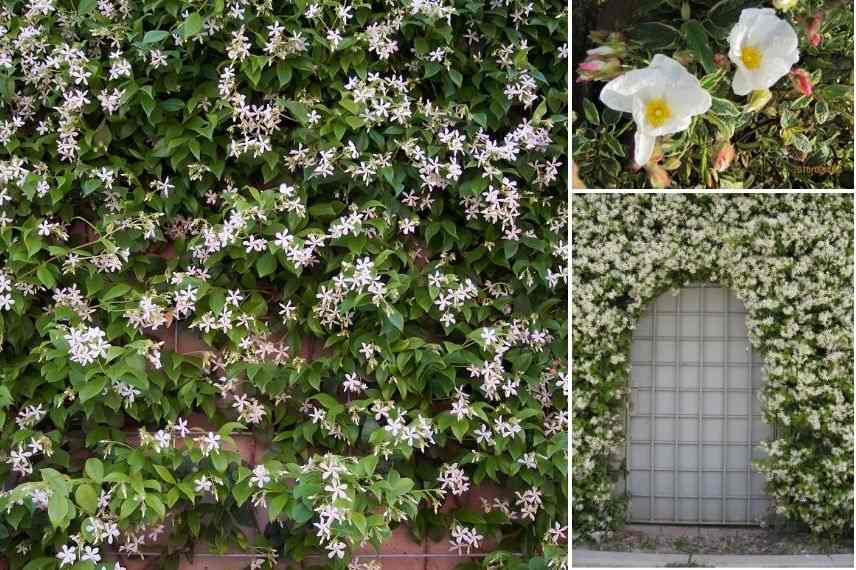
The false jasmine remains a reliable choice for even the beginner gardener. In the top right, variegated rockrose flower
In combination, the Cistus (x) corbariensis ‘Rospico’ ® is particularly bright with its original dark green-grey evergreen foliage edged in golden yellow. This rockrose is hardy down to -15 °C in well-drained soil. Forming a regular and dense dome, it blooms in spring with a multitude of ephemeral flowers resembling white wild roses with a yellow centre. It is perfectly suited to drought and rocky soils. Like most rockroses, it requires warmth, sunlight, and dry soil in summer.
The yellow Banks' rose Rosa banksiae 'lutea'
Lady Banks’ rose or Rosa banksiae‘Lutea’, with its double yellow flowers, is a force of nature, capable of covering an arbor in just 4 to 5 years. This is an exceptional climbing plant, particularly vigorous. This giant, defenseless climber is completely thornless and boasts remarkably early butter-yellow flowering. Originating from China, this Mediterranean climbing plant thrives well even in the Paris region, in a sheltered and very sunny position. Although it is almost scentless, this beautiful flowering climbing plant offers 3 weeks of pure joy in April-May, and its foliage, which is not very susceptible to diseases, is often evergreen.

Generous and bright flowering without danger, as the Banks’ rose is thornless with yellow flowers
Pair the Banks’ rose with cinquefoils like Potentilla Fruticosa ‘Primrose Beauty’ with pale yellow flowers throughout the summer or the hybrid Potentilla ‘Orange’ offering small open cup-shaped flowers in bright orange all summer long. It provides a beautifully assured contrast with their lovely glossy green cushion-shaped foliage. This hybrid variety is easy to grow in full sun or partial shade, in any ordinary soil that is not too dry. Flowering occurs from June to August, with a possible repeat in autumn if the plant is pruned.
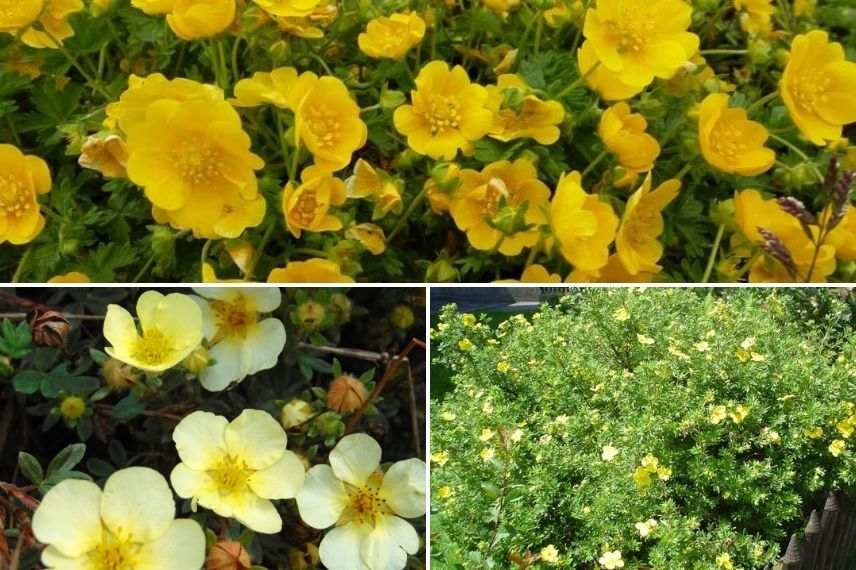
The cinquefoils take over the flowering of the Banks’ rose for the entire summer. Above, Potentilla hybrid orange
Discover other Climbers
View all →Available in 0 sizes
Available in 0 sizes
Available in 0 sizes
Available in 0 sizes
Available in 0 sizes
Available in 0 sizes
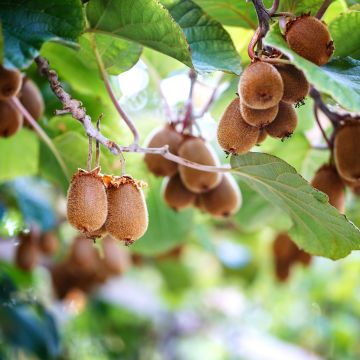
Available in 2 sizes
Available in 1 sizes
Available in 1 sizes
Available in 1 sizes
Chinese wisteria or Wisteria sinensis
The Chinese wisteria, Wisteria sinensis is an exuberant, fragrant climbing plant with mauve violet flowers that bloom simultaneously with the foliage. Flower clusters open from the base to the tip from April to May and emit a light honey fragrance. The Chinese wisteria is the quintessential climbing plant for adorning pergolas with its highly graphic foliage and exceptional flowering. It is also particularly useful for dressing a wall or covering an unsightly fence.
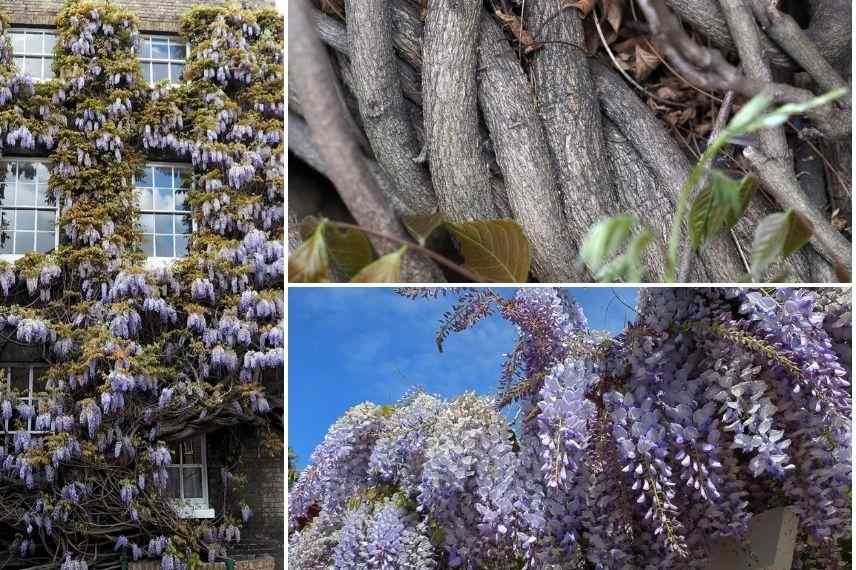
The honey-scented Chinese wisteria is a vigorous climbing plant
→ Did you know: Wisteria always twines in a counter-clockwise direction. It tends to smother nearby plants. Prefer a solitary position in full sun.
Pair it with Clematis cirrhosa var. Balearica, an original clematis with beautifully dissected foliage reminiscent of ferns, and an astonishing winter flowering. This evergreen clematis, known as ‘Christmas clematis’, is often in bloom at this time of year. Its flowering is unique, lightly fragrant, bell-shaped, and a very pale yellow, speckled with purple on the inside. This climbing plant is vigorous and drought-resistant. Hardiness: -12 °C in well-drained soil.

Amazing Christmas clematis with beautiful evergreen foliage
The false jasmine bignonia or Pandorea jasminoides 'Rosea'
Pandorea jasminoides ‘Rosea’ is a pink-flowered form of the false jasmine trumpet vine. It is a stunning climbing plant whose cultivation in open ground is best reserved for the warmest areas of our country. This vigorous cousin of our trumpet vines boasts a long summer flowering period, enhanced by lush foliage of very bright green. It blooms generously, displaying beautiful clusters of funnel-shaped flowers. While its cold resistance is quite limited, this liana thrives in any fertile, well-drained soil, provided it receives the sunlight it needs to flower well. It is also a superb climbing plant for decorating terraces, as it can be easily grown in containers, which should be stored away in winter.

Southern plant to reserve for mild climates and very sunny situations
Pair it with the Ceanothus arboreus ‘Trewithen Blue’, a large shrub with intense blue flowering. This variety is notable for its large size and upright habit, allowing for beautiful uses as a standalone. The decorative flowering lasts a long time. Numerous flowers appear between April and June in a deep blue. The foliage of Ceanothus is evergreen and finely dentate green. Its average lifespan is 15 to 20 years, and its ideal climate is rather maritime. It tolerates salt spray well.
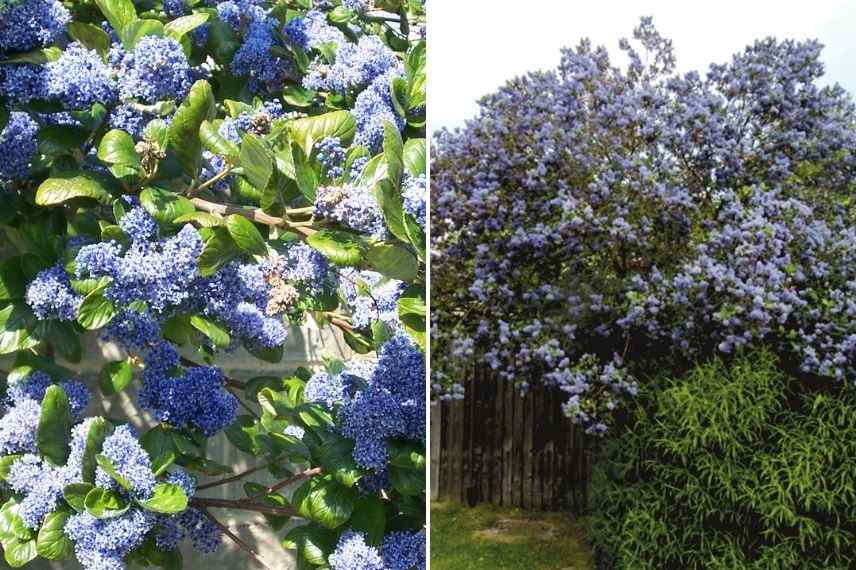
Generosity of the ‘Trewithen Blue’ ceanothus with its superb intense blue flowering
Cape honeysuckle or Tecomaria capensis
Tecomaria capensis, or Cape honeysuckle, is a South African bush trumpet vine. It is a beautiful bush for a mild Mediterranean or oceanic climate. It withstands brief frosts of around -7/-8 °C in well-drained soil. Its growth is rapid and its habit is upright. When trained against a wall, it reaches an average height of 5 m in very mild climates. In a pot, it grows to about 1.50 m in height with a spread of 1 m. Its foliage persists if it does not freeze in winter, but becomes deciduous at -2/-3 °C.

Two beautiful climbing plants that are more than just climbers, with generous flowering in full sun
Pair it with Cape plumbago Plumbago auriculata in full sun in deep soil. This climbing bush with flexible stems quickly reaches heights of 2.50 m to 3 m with a spread of 2.50 m in the ground. In a pot, its dimensions will remain more modest, around 1.50 m in height with a spread of 1 m. Its habit is dense, rounded, and somewhat chaotic. It should be trained against a wall. Its very pure light blue flowering is its main asset. It starts in July and continues until the first frosts.
The climbing white-flowered solanum or Solanum jasminoides 'Album'
The Solanum jasminoides ‘Album’ is a stunning white-flowered form of Solanum jasminoides. It is a persistent climbing plant in mild climates, highly ramified, fast-growing, and very floriferous from June until frost, producing clusters of small star-shaped flowers in pure white, warmed by a heart of orange-yellow stamens. This Mediterranean climbing plant proves to be hardy in zone 8 (-12 °C) and tolerates summer heat and drought well. It is easy to cultivate in well-drained, ordinary soil.
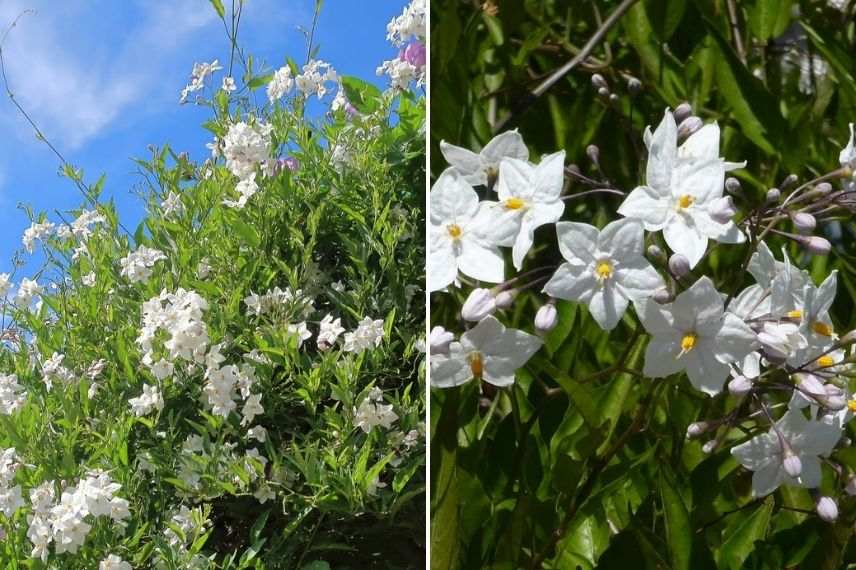
The beautiful white flowering of Solanum jasminoides is followed by the reddening of its foliage in autumn.
Pair it with the Cape aster Felicia amelloides, also known as Agathea coelestis. When it stands in a border or as a specimen, it provides a display that evokes great emotion. This persistent undershrub is in flower from late spring to autumn, continuously covering itself with small daisy-shaped flowers of an extraordinary sky blue, enhanced by a yellow centre. Its growth is rapid, allowing the plant to form a lovely spreading bush in just one season. Floriferous and not demanding regarding soil type, this unfortunately less hardy perennial is ideal for seaside gardens or as a veranda plant, placed in full sun, in very well-drained, even dry soil.
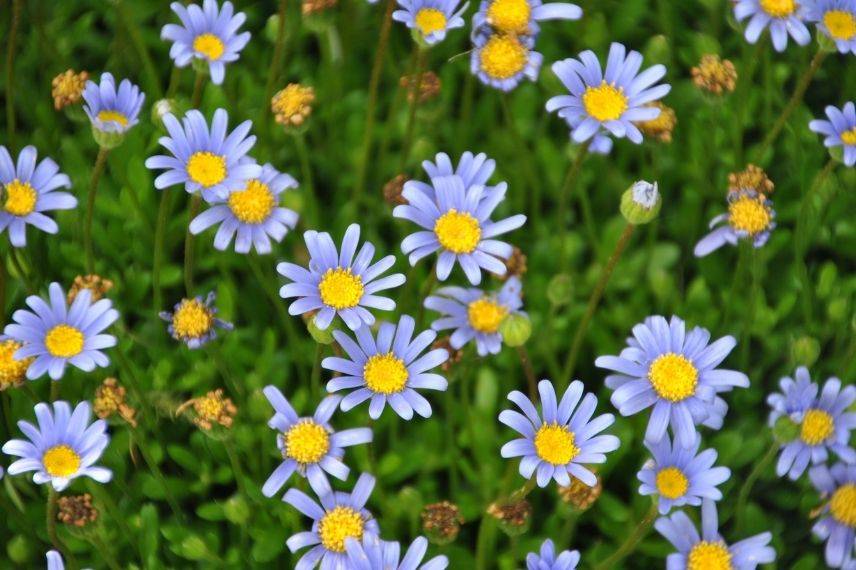
Felicia or agathea with its long flowering of blue stars on persistent foliage.
Chocolate trumpet vine Campsis capreolata
Here is an original trumpet vine, Campsis or Bignonia capreolata, also known as the climbing trumpet vine or chocolate trumpet vine. It is a perfectly original climbing plant, blooming from May to July with long trumpets displaying an orange-red to copper throat and a yellow corolla. While not spectacular, they emit a unique fragrance, blending the round, indulgent notes of chocolate with the more bitter tones of roasted coffee. Its foliage, tough and evergreen in not too cool climates, dark green, takes on purplish hues in winter. It clings on its own using its tendrils equipped with suckers on its support. Not demanding regarding soil type, perfectly drought-resistant, and moderately hardy, it thrives in full sun or partial shade in warm climates.
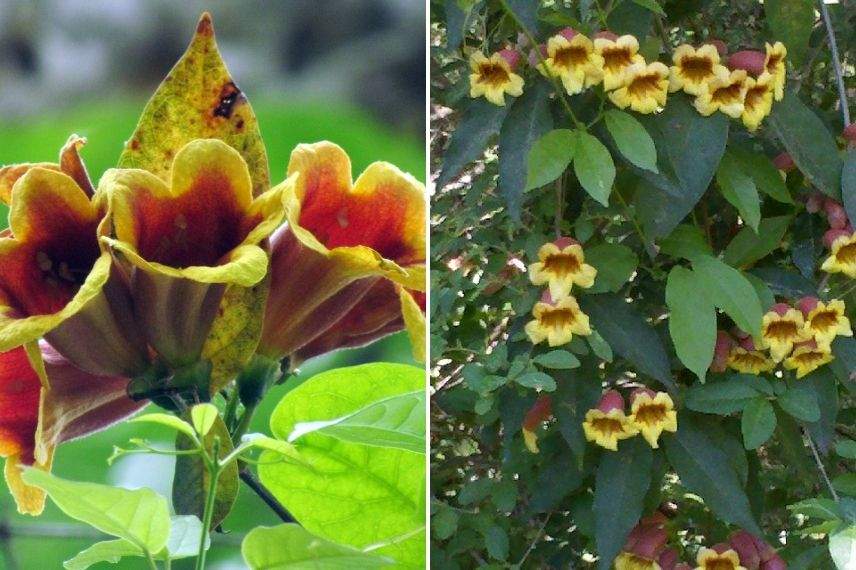
Spectacular abundant flowering of this sweet-scented trumpet vine
Pair it with the Hebe ochracea, featuring evergreen foliage tinged with coppery orange, which will surprise you with its low spreading habit and small white flowers in summer. It reaches 60 cm in height and 80 cm in spread at maturity, with its branches arching as they age. Its evergreen scale-like foliage, in orange-green to golden-brown hues, will remind you more of a conifer. The Hebe ochracea thrives in full sun. This small bush develops in light, well-drained, and cool soils, making it ideal for flowering your rockeries, containers, and sunny borders.
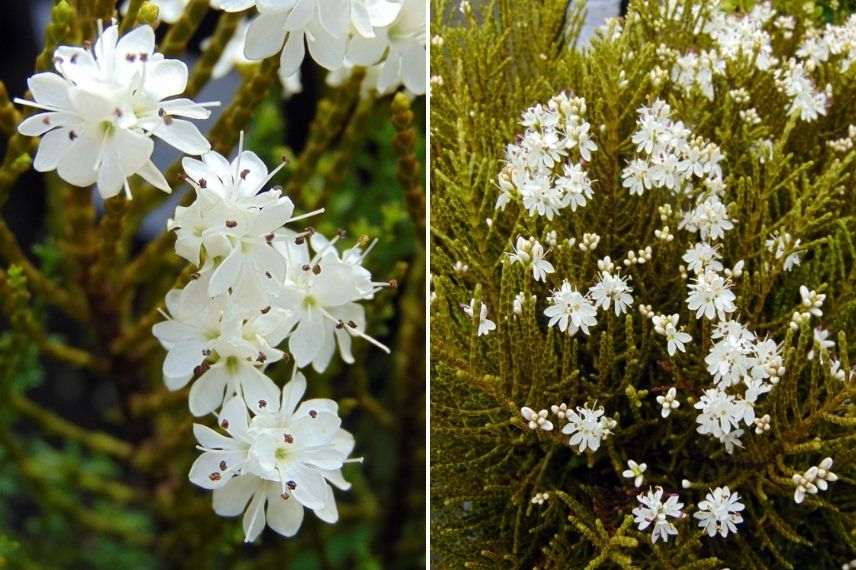
This small evergreen veronica with brown-orange foliage pairs wonderfully with the chocolate trumpet vine
Golden hop or Humulus lupulus 'Aureus'
Humulus lupulus Aureus, also known as golden hop, is a large, highly decorative climbing plant that thrives in open, sunny locations. This beautiful climbing plant is vigorous and fast-growing. It is valued for its large, blonde leaves that turn soft green in summer, resembling those of the vine. The yellow colour of the leaves is particularly striking in spring, gradually changing to chartreuse and soft green in summer, quickly covering a pergola.
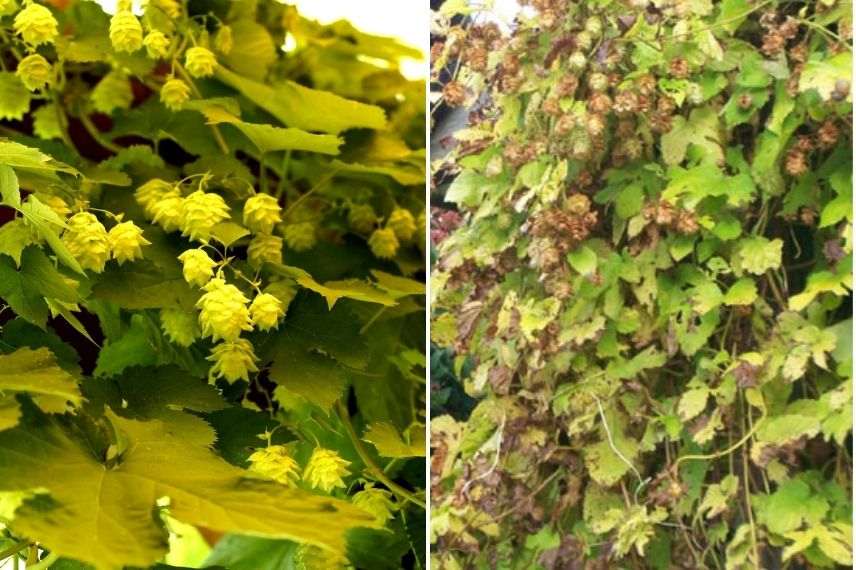
Best reserved for large spaces, the golden hop climbs between 5 and 10 m.
Pair it with the Akebia quinata or chocolate vine in non-scorching sun. Akebias are climbing plants that reach heights of 5 to 8 m with semi-evergreen foliage. The leathery leaves are dark green on top, bluish-green underneath, turning purple in winter. It produces clusters of flowers with three original petals in a stunning purple colour. It bears both male and female flowers on the same plant, allowing for the production of small lilac eggs in late summer.
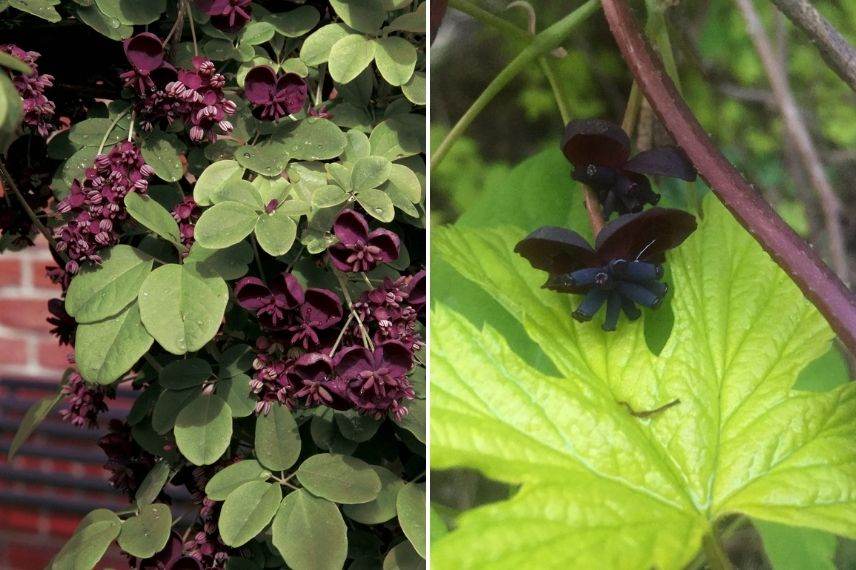
A beautiful combination of Akebia quinata and Humulus lupulus ‘aureus’.
- Subscribe!
- Contents
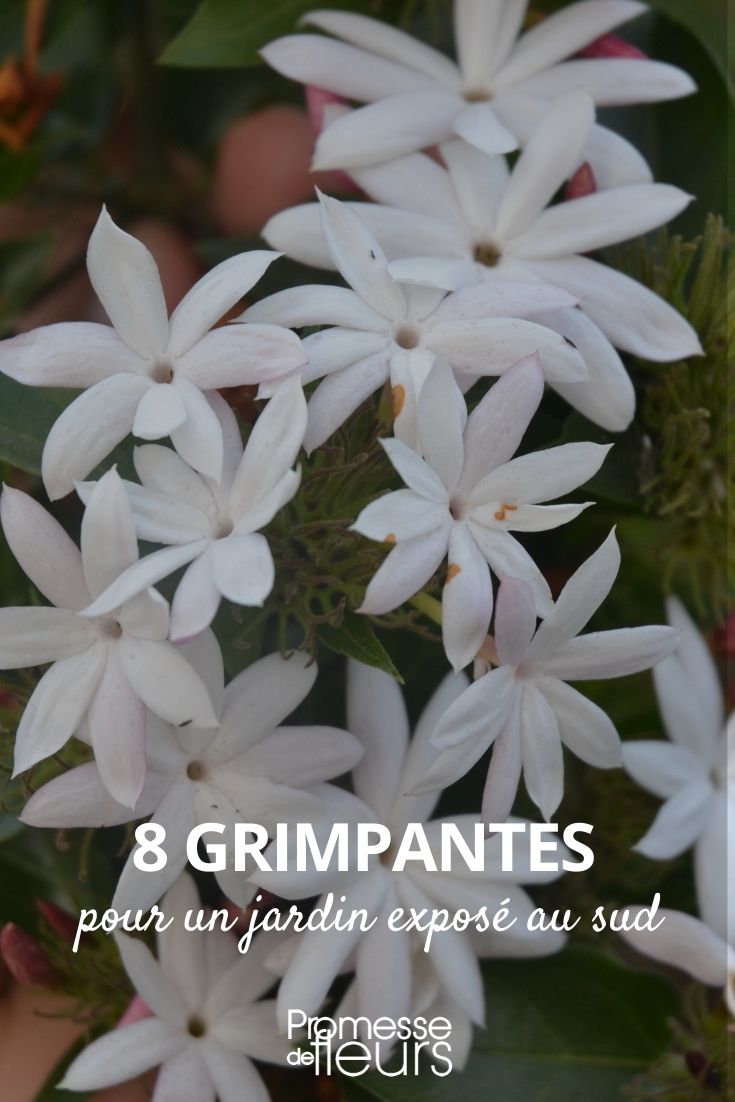
































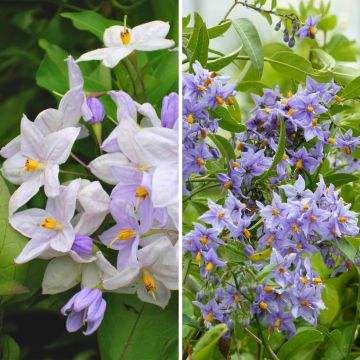
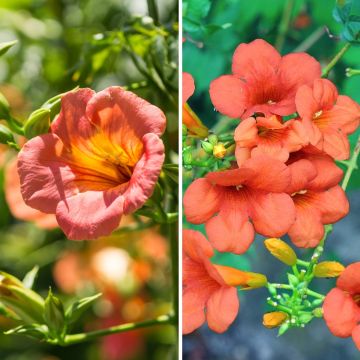

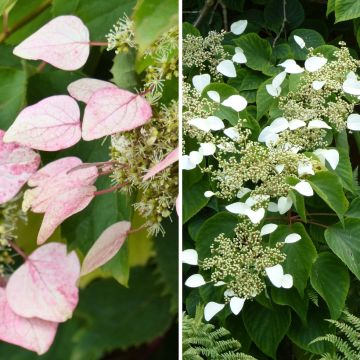


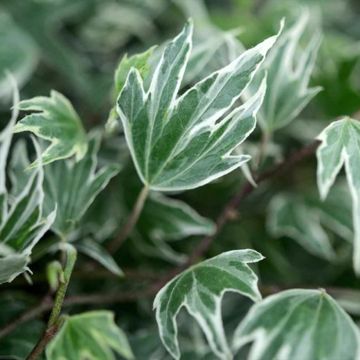

Comments